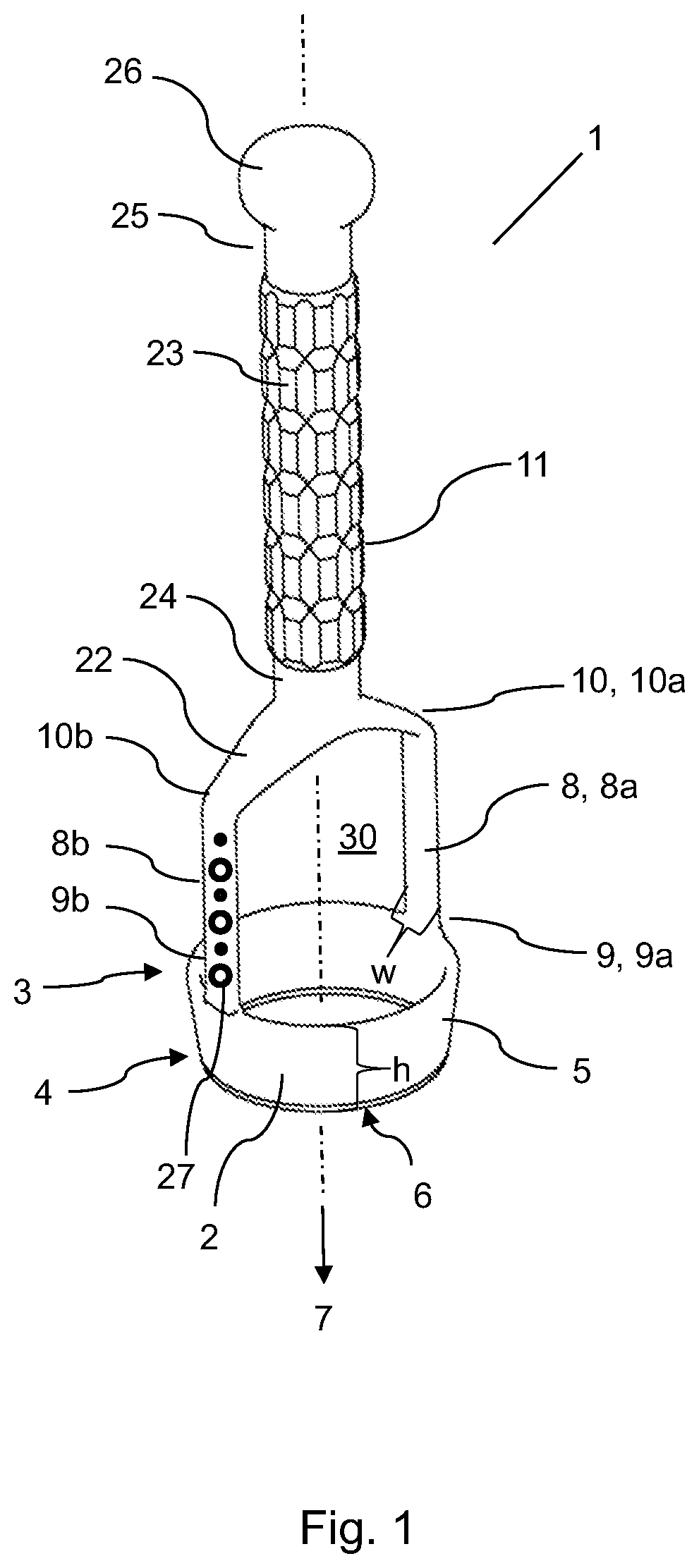Surgical cutting apparatus for removal of a tumour from human tissue
a cutting apparatus and tumour technology, applied in the field of surgical cutting apparatus for the removal of tumours from human tissue, can solve the problems of increased costs, increased psychological impact on patients, and increased complications from anesthesia, so as to reduce the risk of seeding effect and rough edges of the cuts.
- Summary
- Abstract
- Description
- Claims
- Application Information
AI Technical Summary
Benefits of technology
Problems solved by technology
Method used
Image
Examples
Embodiment Construction
[0041]Briefly described, a surgical cutting apparatus is provided, that gives an efficient and well-functioning cutting apparatus, which is easy to handle and also provides a secure and precise removal of a tumour from human tissue through small well-positioned skin incisions. Further, it is easy to get a “clear margin” around the tumour, and since the handling of the tumour is minimized by the unique design of the cutting apparatus, the seeding effect is minimized.
[0042]FIG. 1 shows a perspective view of a surgical cutting apparatus 1, for removal of human tissue tumour, which cutting apparatus comprises a first knife 2, a shank 8 and a handle 11, and which is arranged for cutting tissue in a first direction 7. The first knife 2, is designed like a circular, tube-shaped blade, with a proximal end 3, a distal end 4 and a circular shaped side wall 5 arranged between the proximal end 3 and the distal end 4. The distal end 4 comprises a cutting edge 6 along at least a major portion of ...
PUM
 Login to View More
Login to View More Abstract
Description
Claims
Application Information
 Login to View More
Login to View More - R&D
- Intellectual Property
- Life Sciences
- Materials
- Tech Scout
- Unparalleled Data Quality
- Higher Quality Content
- 60% Fewer Hallucinations
Browse by: Latest US Patents, China's latest patents, Technical Efficacy Thesaurus, Application Domain, Technology Topic, Popular Technical Reports.
© 2025 PatSnap. All rights reserved.Legal|Privacy policy|Modern Slavery Act Transparency Statement|Sitemap|About US| Contact US: help@patsnap.com



